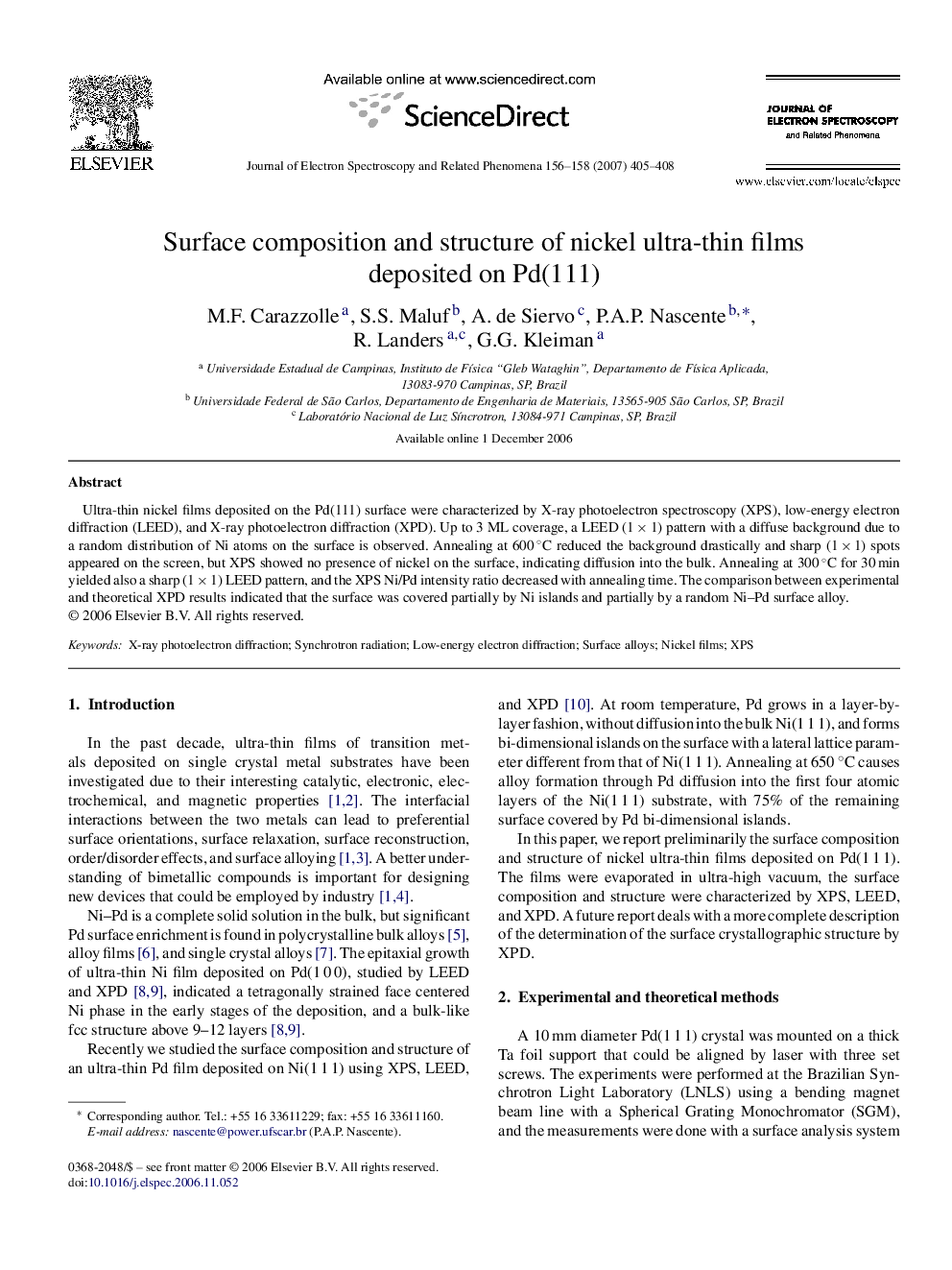| Article ID | Journal | Published Year | Pages | File Type |
|---|---|---|---|---|
| 5397118 | Journal of Electron Spectroscopy and Related Phenomena | 2007 | 4 Pages |
Abstract
Ultra-thin nickel films deposited on the Pd(111) surface were characterized by X-ray photoelectron spectroscopy (XPS), low-energy electron diffraction (LEED), and X-ray photoelectron diffraction (XPD). Up to 3 ML coverage, a LEED (1 Ã 1) pattern with a diffuse background due to a random distribution of Ni atoms on the surface is observed. Annealing at 600 °C reduced the background drastically and sharp (1 Ã 1) spots appeared on the screen, but XPS showed no presence of nickel on the surface, indicating diffusion into the bulk. Annealing at 300 °C for 30 min yielded also a sharp (1 Ã 1) LEED pattern, and the XPS Ni/Pd intensity ratio decreased with annealing time. The comparison between experimental and theoretical XPD results indicated that the surface was covered partially by Ni islands and partially by a random Ni-Pd surface alloy.
Keywords
Related Topics
Physical Sciences and Engineering
Chemistry
Physical and Theoretical Chemistry
Authors
M.F. Carazzolle, S.S. Maluf, A. de Siervo, P.A.P. Nascente, R. Landers, G.G. Kleiman,
